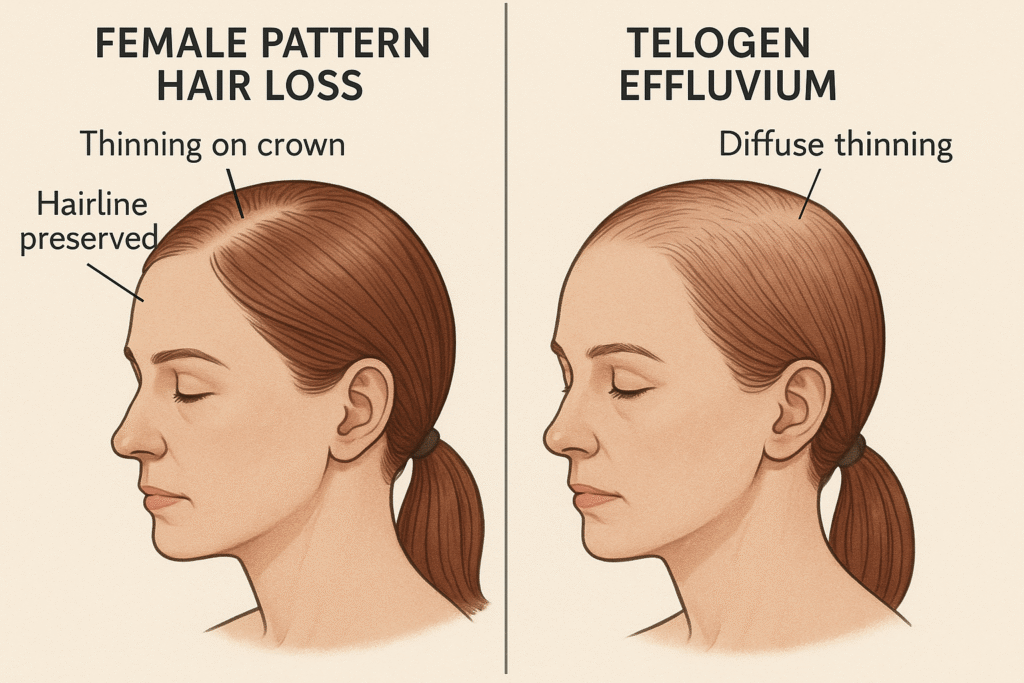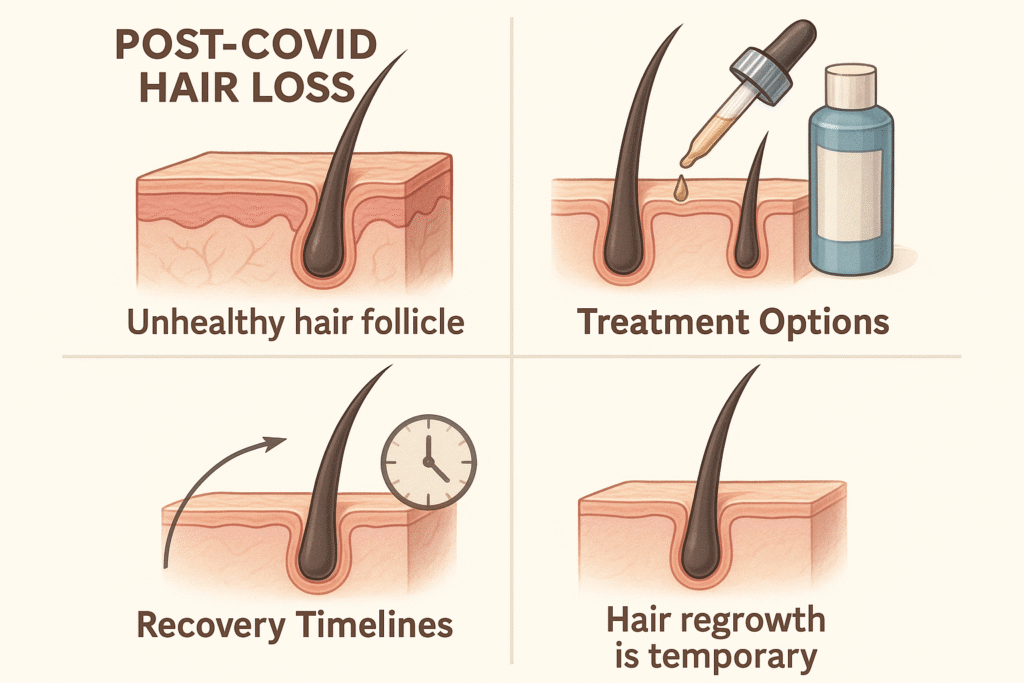Introduction:
Hair loss can be a subtle enemy, creeping up unnoticed until it becomes visible and more challenging to reverse. Recognising the early signs of hair loss is crucial in taking timely action to mitigate its impact. Whether due to genetics, stress, or medical conditions, understanding these early indicators and early signs of hair loss can lead you to seek effective treatments sooner. This guide will explore the subtle signs of hair loss, why they occur, and how early intervention can significantly influence your hair restoration journey.
“Recognising and acting upon the early signs of hair loss is key in tackling the issue head on.”
Dr Amy
What Are the Early Signs of Hair Loss?
Hair Thinning on Top of the Head
The most common early sign of hair loss, particularly in the pattern hair loss, is thinning hair on the top of the head. This gradual change often goes unnoticed until more scalp becomes visible. For men, this might start with a receding hairline, while women might notice a broadening of the part in their hair.
Excessive Hair Shedding
While it’s normal to shed 50 to 100 hairs a day, excessive shedding can be a precursor to hair loss. If you find more hair than usual on your pillow, in the shower drain, or on your brush, it might be time to explore why.
Hair Not Growing as Long
Another subtle sign is hair not achieving previous lengths or seeming to take longer to grow. This could indicate that your hair growth cycle is shortening, a common feature of hair loss.
Changes in Hair Texture
Hair texture changes, such as hair becoming finer, can also indicate the onset of hair loss. This can make hair more difficult to style or give the appearance of less volume.
Why Recognising Early Signs is Crucial
Early Detection, Better Outcomes The earlier you detect signs of hair loss, the more effective treatments can be. Early intervention can slow down or even reverse hair loss with the right treatments and lifestyle adjustments.
Prevent Further Loss By addressing hair loss early, you can prevent more significant balding or thinning. This is particularly important in conditions like androgenetic alopecia, where progressive hair loss is common.


Modifying your lifestyle can also play a role in managing FPHL
- Nutrition: Ensure a balanced diet rich in vitamins and minerals that support hair health, such as iron, vitamin D, omega-3 fatty acids, and protein.
- Stress Management: Since stress can exacerbate hair loss, finding effective ways to manage stress through yoga, meditation, or therapy is crucial.
- Hair Care: Avoid harsh treatments such as perms, dyes, and styles that pull at the hair or tug on the scalp.
Conclusion:
Recognising the early signs of hair loss is a critical step in maintaining your hair health. With timely action and professional guidance, you can significantly influence the course of hair thinning and loss. At our clinic Doctor-lead clinic in Mayfair, we understand the challenges of early hair loss and are dedicated to providing compassionate and effective treatment to help you regain not just your hair, but also your confidence.










